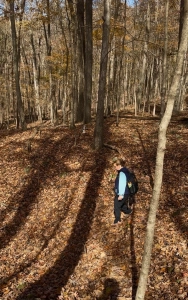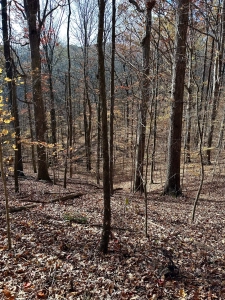Intergenerational Spring Saunter at Alabama’s Monte Sano State Park!
Alabama grandsons Jack (17 years) and Sam (11) accompanied me on April 19, 2025, as we traversed the Sinks and Wells Memorial Trails at Alabama’s Monte Sano State Park near Huntsville. Seven months beyond my second total knee replacement surgery and 21 months since my triple bypass, there’s little I will not attempt on local trails. I’m relentlessly abiding by the tenets of Nature-Inspired Life and Living and Nature-Buoyed Aging and Healing. Come with us as we discover delights and treasures hiding in plain sight.
On the Trails: Sinks and Wells Memorial
Growing up in the central Appalachians of western Maryland, I feel at home on the Monte Sano trails. The varied terrain and hardwood forests range from the rich and productive concave lower north to east-facing slopes to the rocky low-quality west and south-facing convex slopes. The Sinks and Wells trails transect generally good to excellent sites. On a previous visit, I measured a yellow poplar on the Sinks trail 142 feet tall.
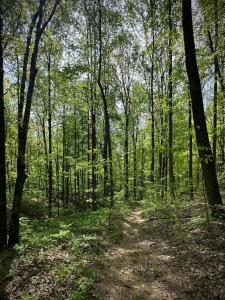
I recorded this 57-second video on the Sinks Trail.
You’ll note that I stated in my narrative, “I would not trade this for anything in the world.”
Albert Einstein made clear that one of the greater joys in approaching our sunset years is knowing that we can live on through subsequent generations:
Our death is not an end if we can live on in our children and the younger generation. For they are us; our bodies are only wilted leaves on the tree of life.
I am looking at the sunset from a far and distant dawn. My Dad would have been 100 this year. He passed 29 years ago, yet he walks with me every step of my woodland saunters. He remains alive through me, even as Jack and Sam will carry my spirit through their lives and beyond.
A Sampling of Spring Ephemerals
We saw many spring wildflowers, including a few notable examples. I offer these in form of a brief portfolio. I see no need to include a narrative.
Dwarf larkspur:
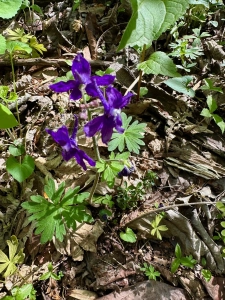
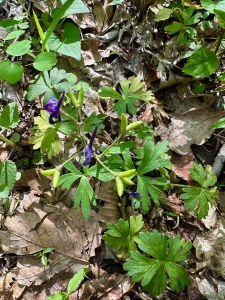
Rue anemone and wild geranium:
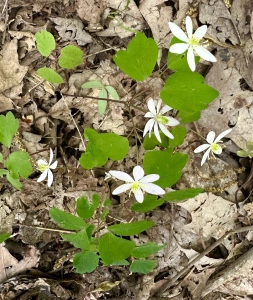
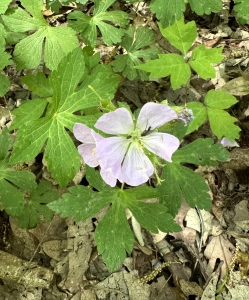
White baneberry:
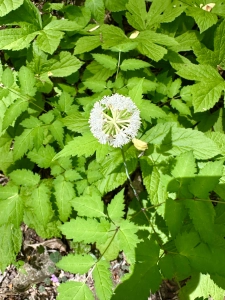
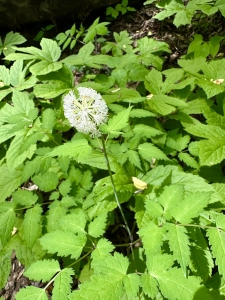
Those three species date back to my systematic botany lab days more than a half-century ago.
I recorded this 60-second video of a forest floor carpeted with mayapple umbrellas:
And the same holds for mayapple and systematic botany.
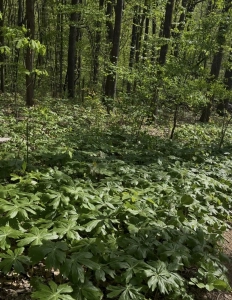
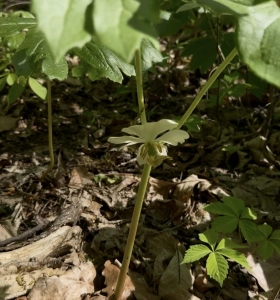
Mayapple holds a little secret — only the plants with two leaves are sexually mature. If one leaf, don’t expect to see a flower. If two leaves, the flower will appear in the dual-leaf axil.
Drooping trillium grows north into the Great Lakes region. So much of what I treasure seeing here in northern Alabama extends up through and beyond where I studied all manner of forestry.
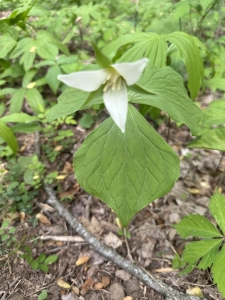
I suppose I will always be a spring ephemeral wildflower enthusiast — it’s in me for life.
And a Fern
I recall Pennsylvania forests with a full ground cover of New York and hay-scented fern. I miss those special places. Here in north Alabama, I’m pleased to encounter individual plants, like this silver glade fern.
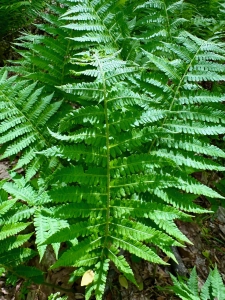
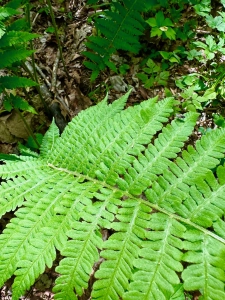
Wells Memorial Trail: One of My Favorite Places
I co-taught a UAH OLLI course this past spring: North Alabama Naturalists and Their Special Places. I selected The Wells Memorial Trail as my Special Place. Search my Great Blue Heron website for Wells Memorial Trail to access previous photo essays on the trail and its magic.
I recorded this 59-second video at three-benches, the gateway to the Wells Trail.
A special place indeed!
Odd Tree Forms
I’ve never encountered a tree form curiosity or oddity that failed to pique my interest. I quote Leonardo da Vinci often in my Great Blue Heron posts. He urges me from half a millennium ago to examine oddities and curiosities intent on explaining the cause of these exquisite abnormalities:
There is no result in nature without a cause; understand the cause and you will have no need of the experiment.
In fact, I just came to the realization that tree form curiosities and oddities are so common that terming them abnormalities may be a misnomer!
Most of our northern Alabama forests are second-growth, the result of natural regeneration following timber harvesting or suspension of agricultural tillage or pasturing 80-to-100+ years ago. Timber harvesting would have left scarred, injured, and otherwise non-commercial residuals. This massive oak was likely such an invidual. T0day its hollow severely decayed and disfigured bulk is yielding to inevitable forces, its strength to vulnerabilty ratio passing an irresistible threshold.
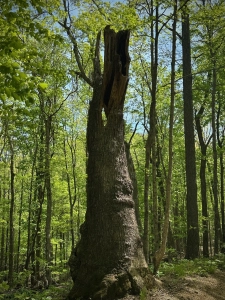
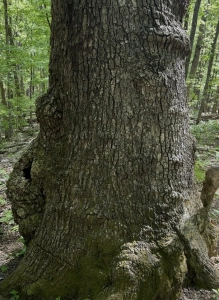
I recorded a 59-second video of the massive oak.
Its large carcass is scattered across a half-acre. Its once magestic hulk lies broken and disassembling. Decomposers will take over the task of returning its mass to the soil.
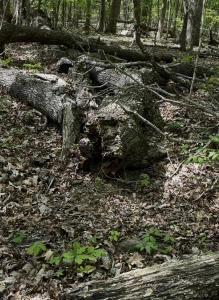
Basswood is adept at resprouting from cut stumps. Loggers harvested a large basswood tree here along the upper Sinks Trail many decades prior. These four or five large tall basswoods grew from sprouts around the severed stump — hence, a mature stump cluster!
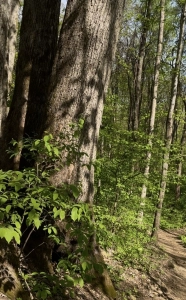
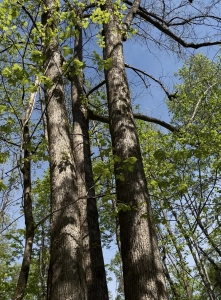
Here is my 57-second video of the basswood stump cluster, with a couple of grandsons thrown in for good measure…literally for good measure as a scale for judging trunk size.
I stop to admire the cluster each time I venture through these towering trees.
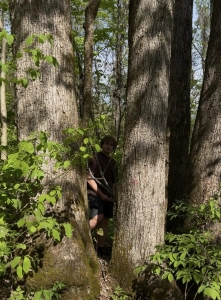
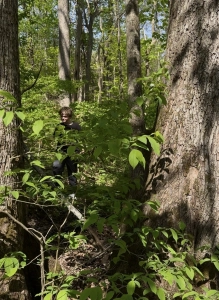
We approached this tree skeleton caricature carefully. It struck a compelling pose, leaning over us, elbows and forearms on the opposite side of the trail supporting its weight. Dare we stand under it, tempting the creature to awaken and snag us from the path? Our hardwood forests may not be the dark and foreboding, foul and repugnant wilderness tracts New England’s European settlers characterized four centuries ago, yet they are still habitated by sylvan ogres and wood spirits. What good would a woodland venture with grands be without seeking and finding such delights?!
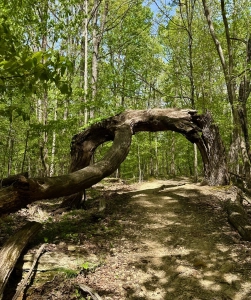
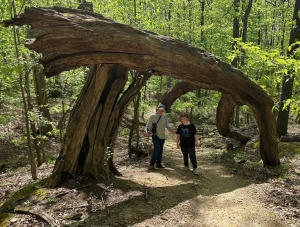
I am sure that some trekkers would leap to conclude that this is an Indian Marker Tree. No, a falling branch or tree impacted this hickory when it was pole-sized. The concussion bent the more supple younger stem and broke the top, where the rounded stub protrudes. In response, the hickory activated adventitious buds to send new shoots vertically to resecure ascent into the upper canopy and its direct sunlight. The arched original stem supports three elevated trunks reaching heavenward. The tree does indeed point to something. You are free to fashion the mythical object or destination. I am old enough to remember the old weeknight (1965-67) comedy program, F-Troop. I recall the directions given to one of the characters, “Turn left at the rock that resembles a bear; and then turn right at the bear resembling a rock.” This tree’s directional utility may be of equivalent merit!
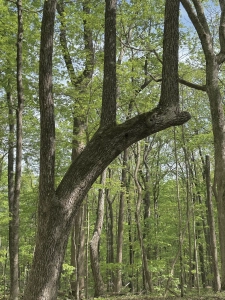
And yet another marker tree. Same song, different verse. Physical injury and evolved response to live and fluorish another day; seek the light above; produce seed; pass genes forward; all absent the hand of man.
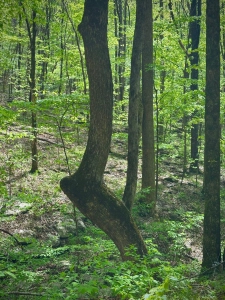
Nothing in Nature is static; nothing in the natural world is new. I can’t imagine anything that hasn’t happened before…a thousand (nay, ten thousand by ten thousand) times before.
Special Mountain Biking Feature
I’m a committed Nature enthusiast…and naturalist purist. I have no desire to catapult through the forest, kamikazi-style on my two-wheeled steed. I limit myself to paved or smoothly-graded gravel greenways. However, I recognize that mountain biking is a popular woodland pursuit. Our route took us past The Sinks Ride Area. I include it only as a sidebar. Some State Park users praise the expanding bike features. Others consider it anathema to the core mission. I leave judgement to others.
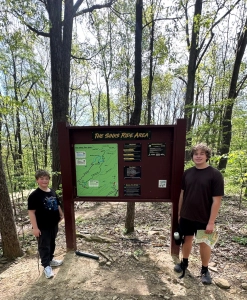
Closing at a Perfect Place for Rest and Contemplation
I like the Three Benches trail intersection where the Wells Memorial Trail heads off the Sinks Trail. The three benches sit in deep shade in the cove hardwood site. A massive yellow popular tree nourishes the soul, reminding me what good living, ample resources, and time can provide. When my dear friend and professional colleague (from my Penn State University days) died four years ago in October, I recorded a tribute video to him at this sacred place.
Here is the 59-second video I recorded with the grandsons taking a breather.
My third book, Weaned Seals and Snowy Summits, carries an apt subtitle: Stories of Passion for Place and Everyday Nature. When I reflect on my well over 400 Great Blue Heron posts, I realize that my focus is on Place and Everyday Nature.
Alabama State Parks Foundation
Thoughts and Reflections
I offer these observations:
- Our death is not an end if we can live on in our children and the younger generation. For they are us; our bodies are only wilted leaves on the tree of life. (Albert Einstein)
- There is no result in nature without a cause; understand the cause and you will have no need of the experiment. (Leonardo da Vinci)
- I would not trade this (exploring in the woods with my grandsons) for anything in the world. (Steve Jones)
Inhale and absorb Nature’s elixir. May Nature Inspire, Inform, and Reward you!
Note: All blog post images created & photographed by Stephen B. Jones unless otherwise noted. Please circulate images with photo credit: “©2025 Steve Jones, Great Blue Heron LLC. All Rights Reserved.”
I am available for Nature-Inspired Speaking, Writing, and Consulting — contact me at steve.jones.0524@gmail.com
Reminder of my Personal and Professional Purpose, Passion, and Cause
If only more of us viewed our precious environment through the filters I employ. If only my mission and vision could be multiplied untold orders of magnitude:
Mission: Employ writing and speaking to educate, inspire, and enable readers and listeners to understand, appreciate, and enjoy Nature… and accept and practice Earth Stewardship.
Vision:
- People of all ages will pay greater attention to and engage more regularly with Nature… and will accept and practice informed and responsible Earth Stewardship.
- They will see their relationship to our natural world with new eyes… and will understand more clearly their Earth home.
Tagline/Motto: Steve (Great Blue Heron) encourages and seeks a better tomorrow through Nature-Inspired Living!
Steve’s Four Books
I wrote my books Nature Based Leadership (2016), Nature-Inspired Learning and Leading (2017), Weaned Seals and Snowy Summits: Stories of Passion for Place and Everyday Nature (2019; co-authored with Dr. Jennifer Wilhoit), and Dutton Land & Cattle: A Land Legacy Story (2023) to encourage all citizens to recognize and appreciate that every lesson for living, learning, serving, and leading is either written indelibly in or is powerfully inspired by Nature. All four of my books present compilations of personal experiences expressing my deep passion for Nature. All four books offer observations and reflections on my relationship with the natural world… and the broader implications for society. Order any from your local indie bookstore, or find them on IndieBound or other online sources such as Amazon and LifeRich.
I began writing books and Posts for several reasons:
- I love hiking and exploring Nature
- I see images I want to (and do) capture with my trusty iPhone camera
- I enjoy explaining those images — an educator at heart
- I don’t play golf!
- I do love writing — it’s the hobby I never needed when my career consumed me
- Judy suggested my writing is in large measure my legacy to our two kids, our five grandkids, and all the unborn generations beyond
- And finally, perhaps my books and Blogs could reach beyond family and touch a few other lives… sow some seeds for the future
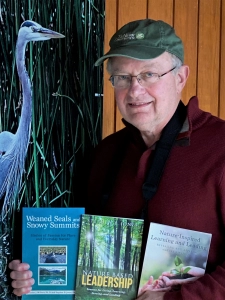


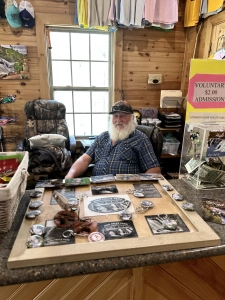
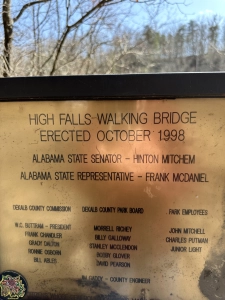
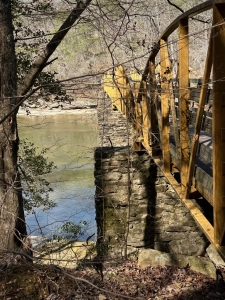
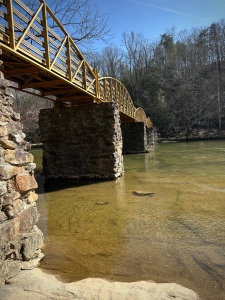
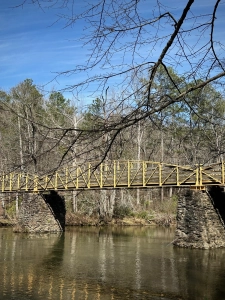
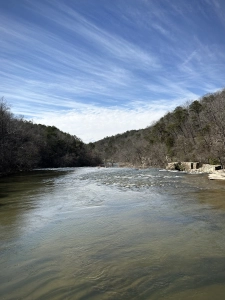
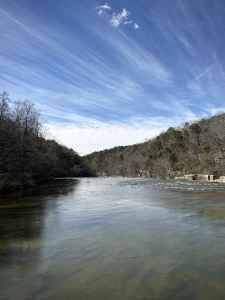
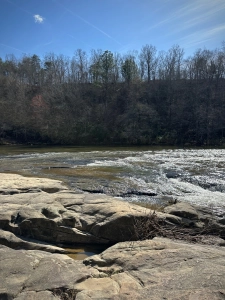
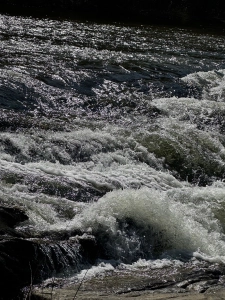
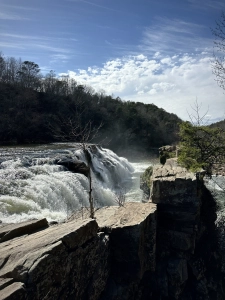
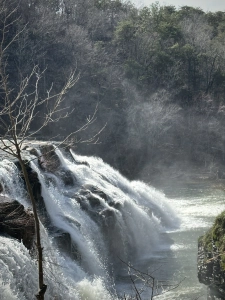
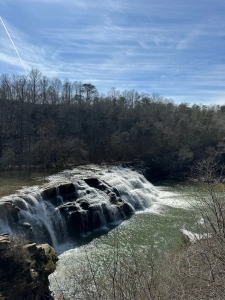
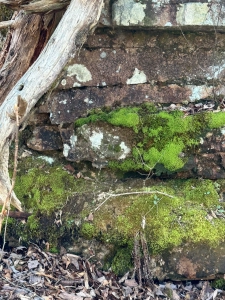
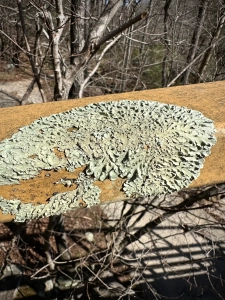
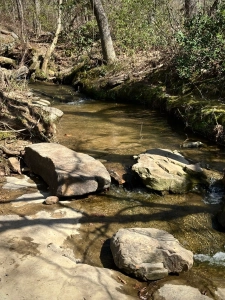
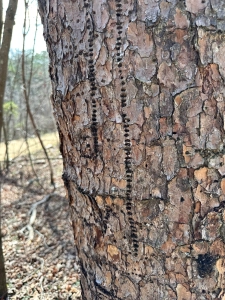
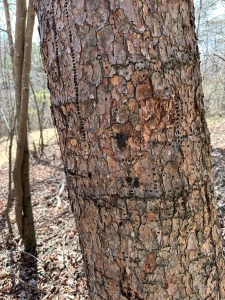
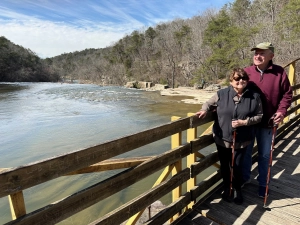
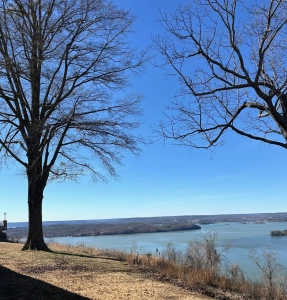
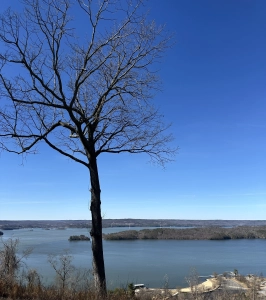
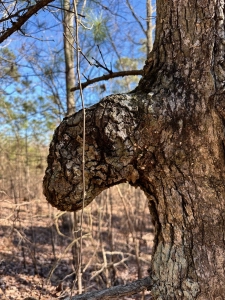
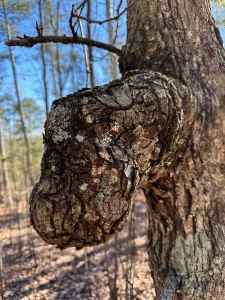
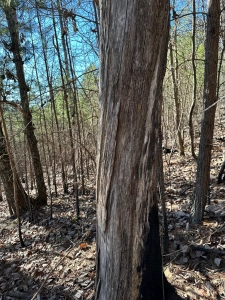
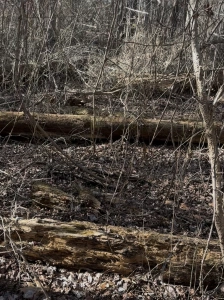
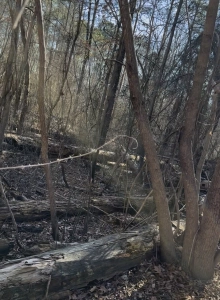
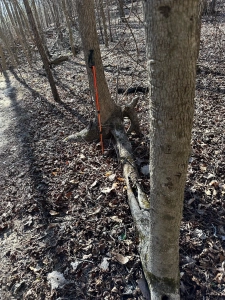
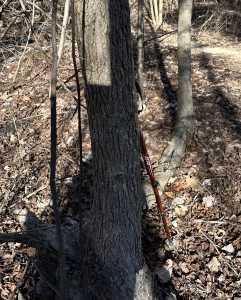
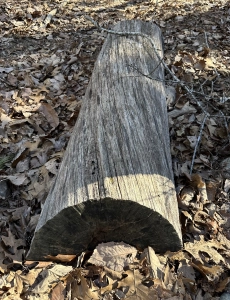
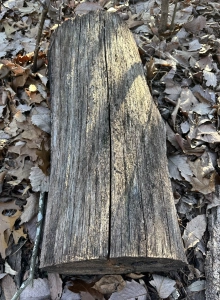
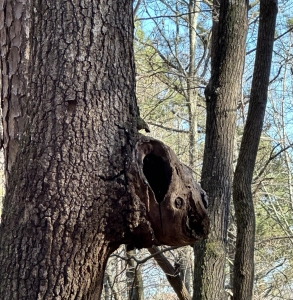
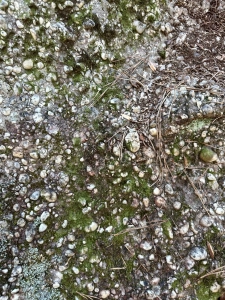
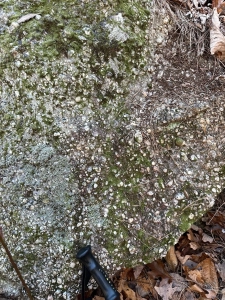
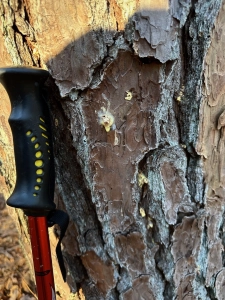
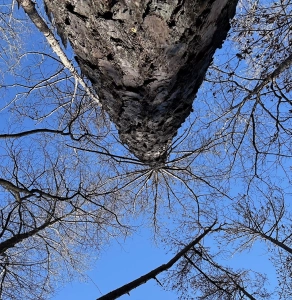
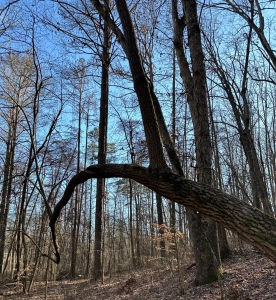
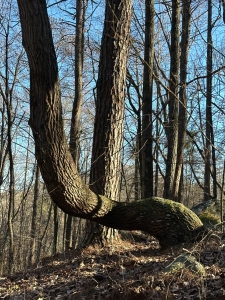
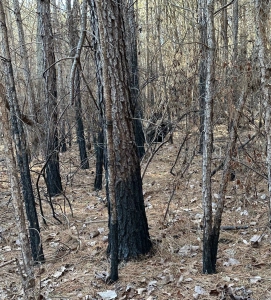
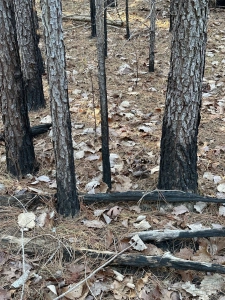
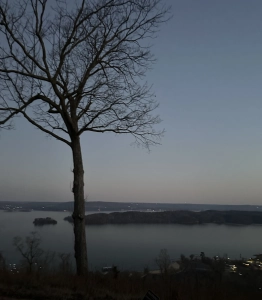
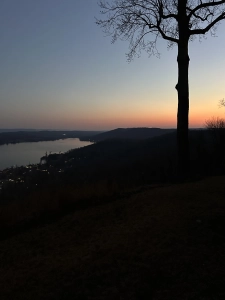
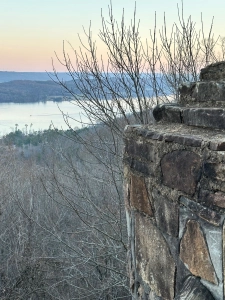
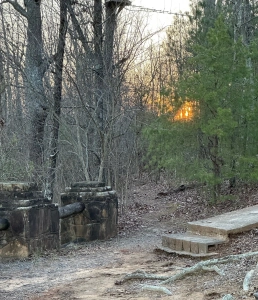
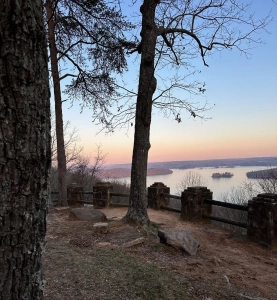
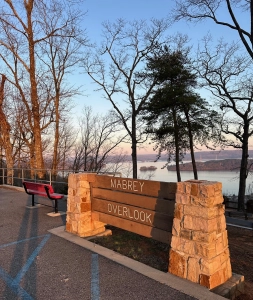
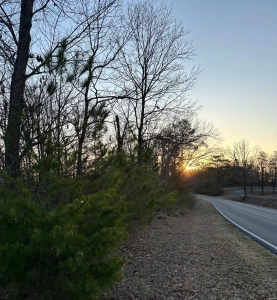
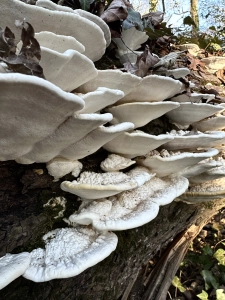

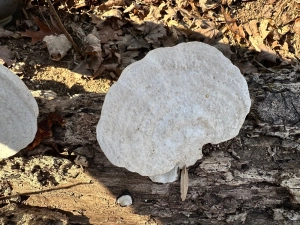

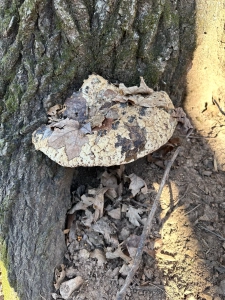
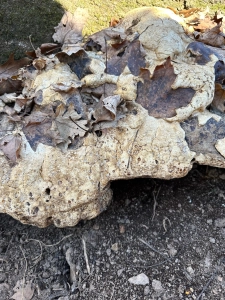
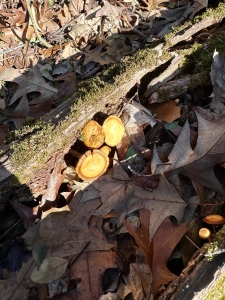
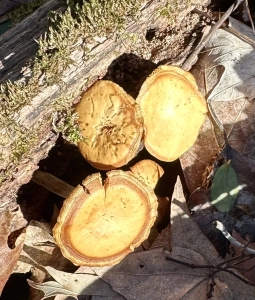
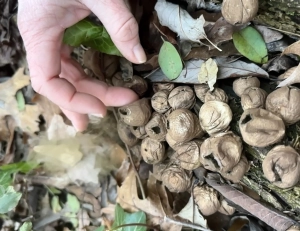
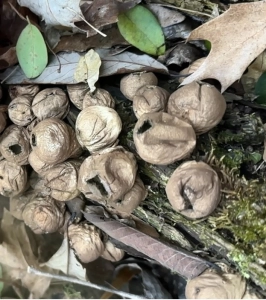
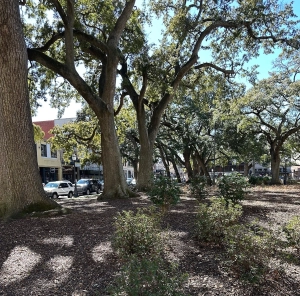
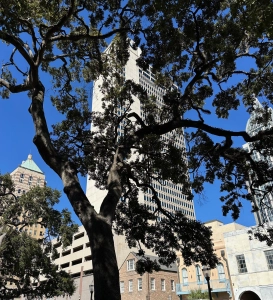
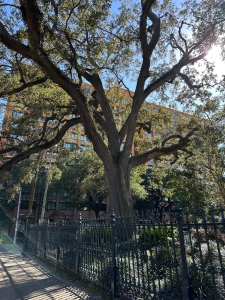
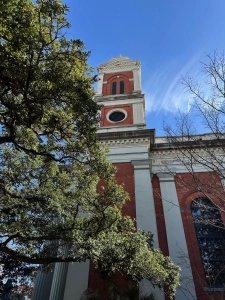
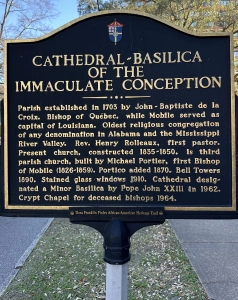

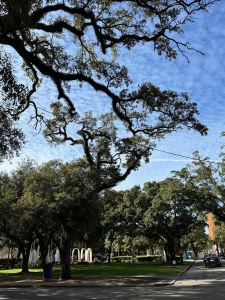
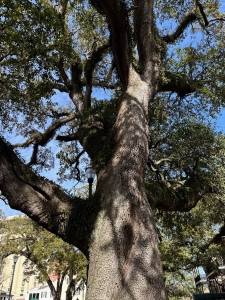
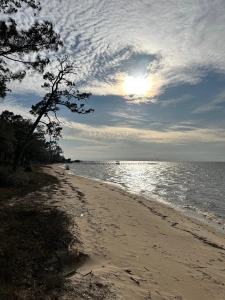
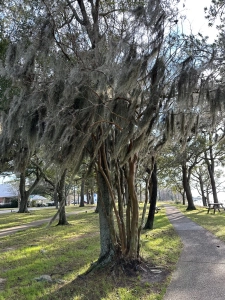
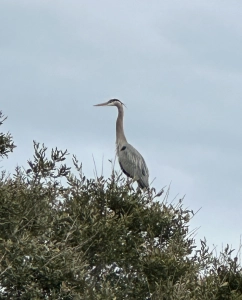
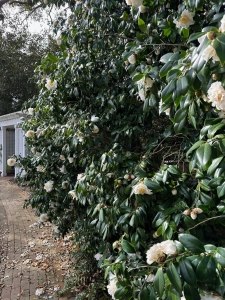
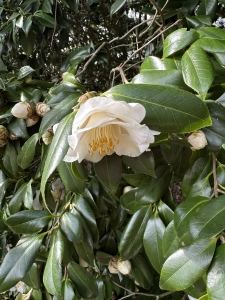
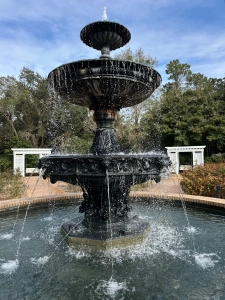
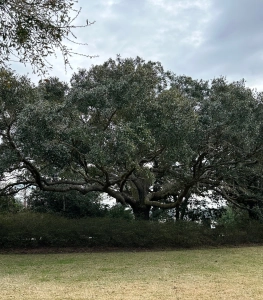
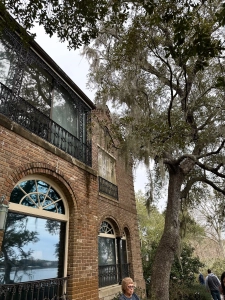
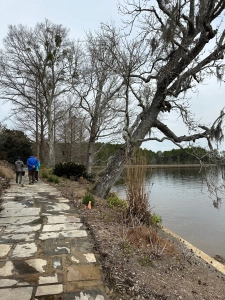
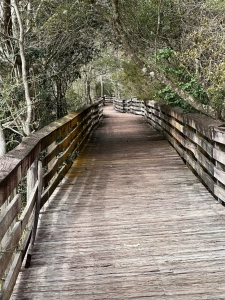
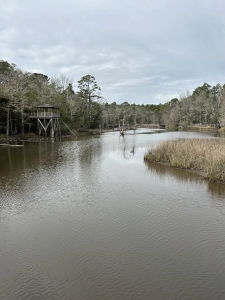
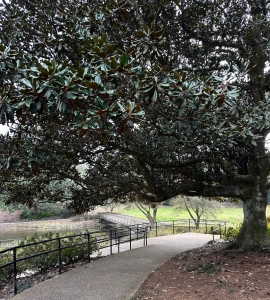
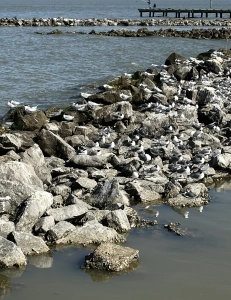
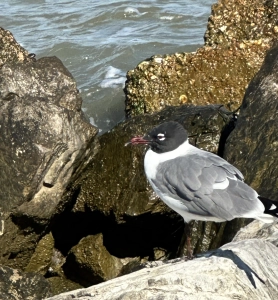
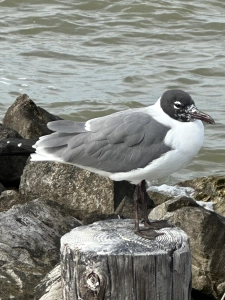
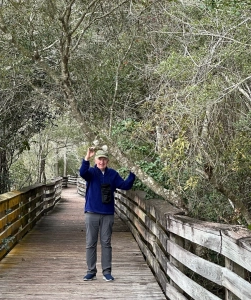
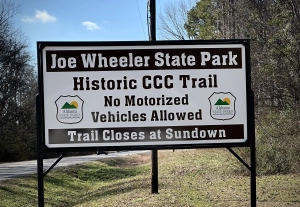
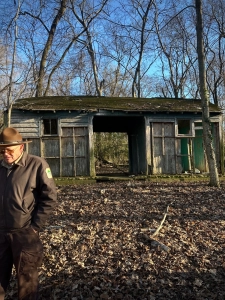
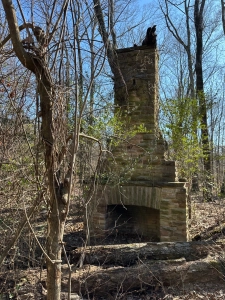
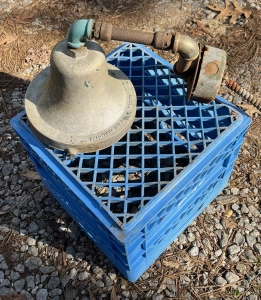
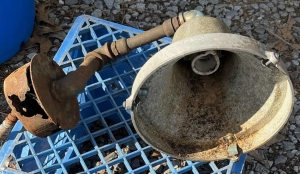
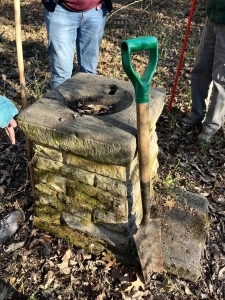
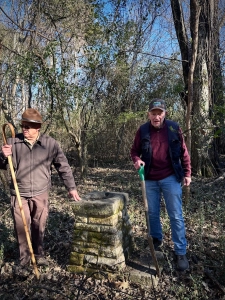
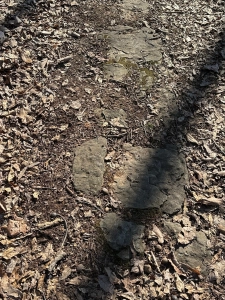
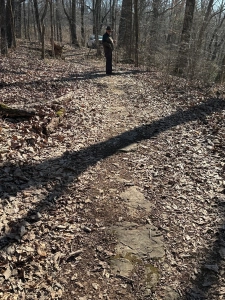
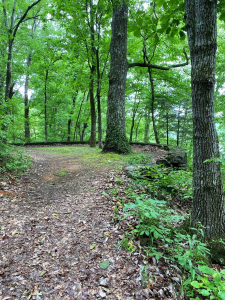
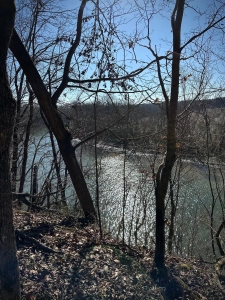
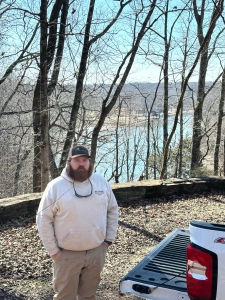
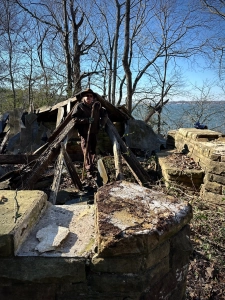
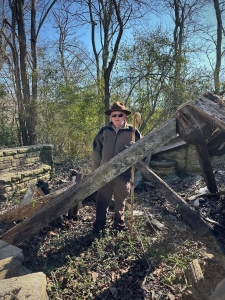
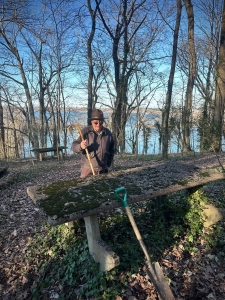
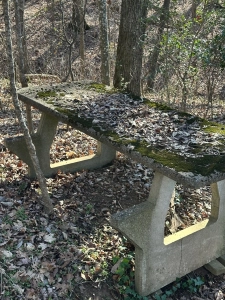
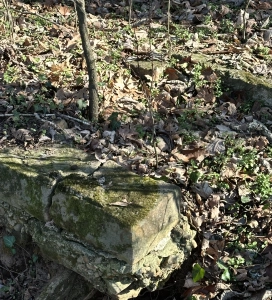
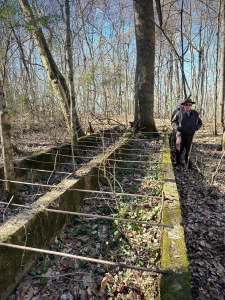
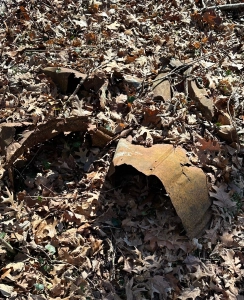
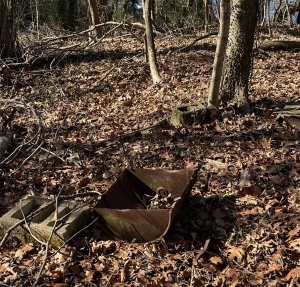
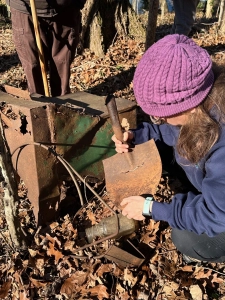
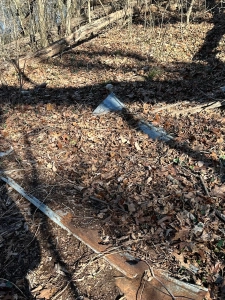
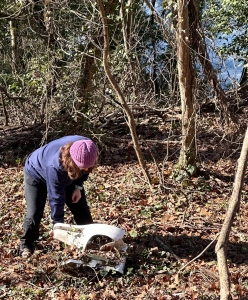
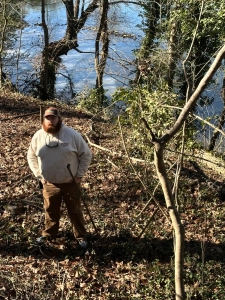
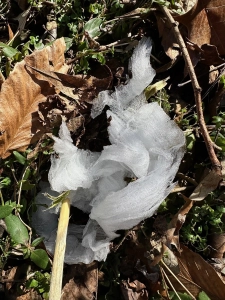
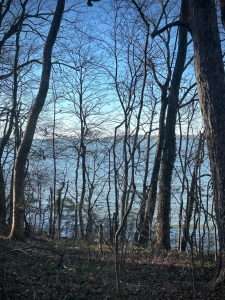
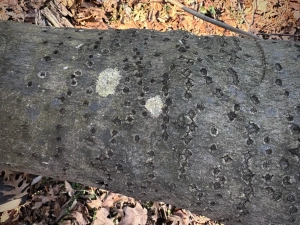
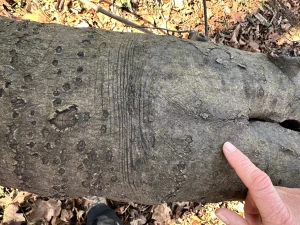
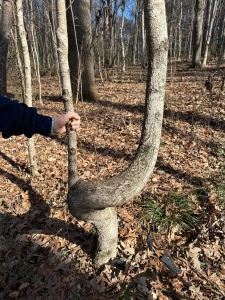
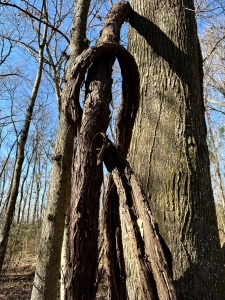
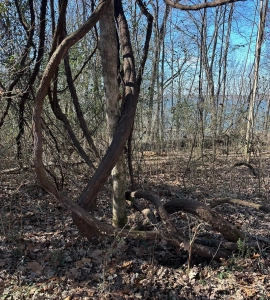
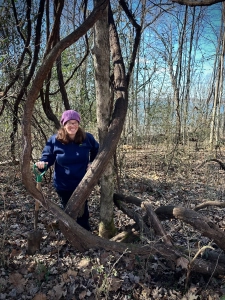
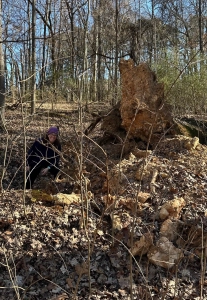
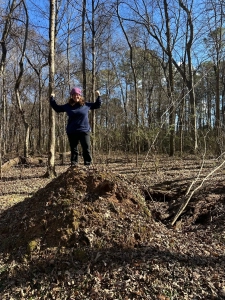
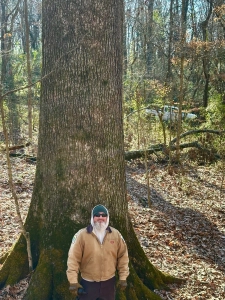
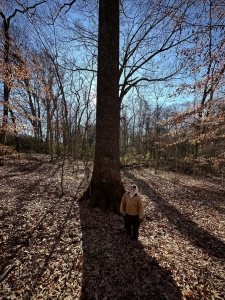
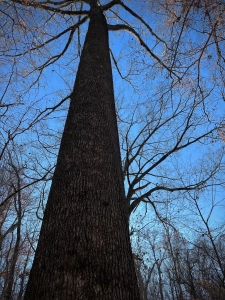
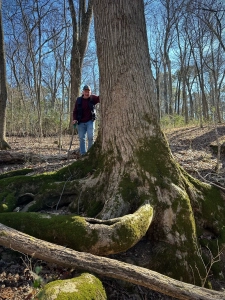
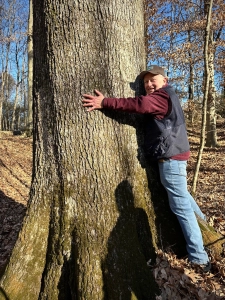
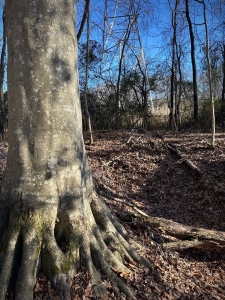
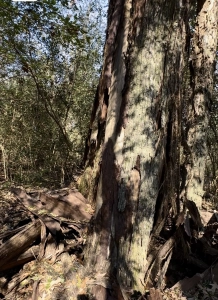
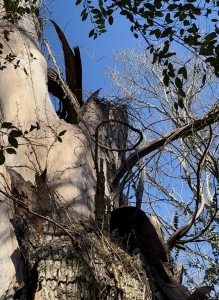
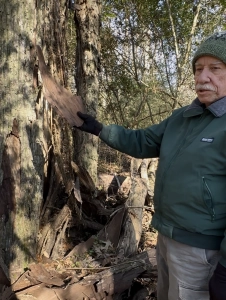
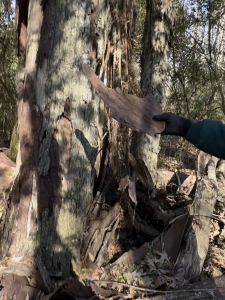
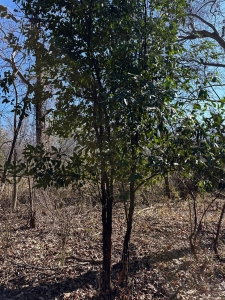
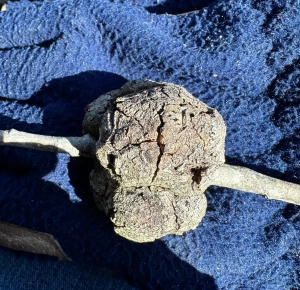
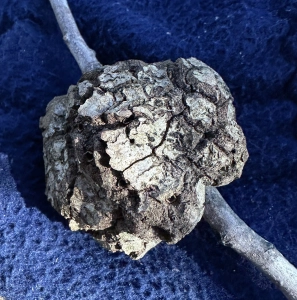
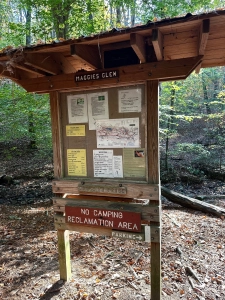
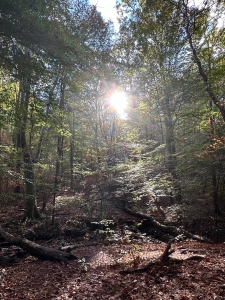
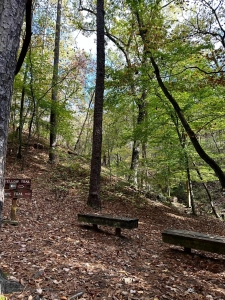
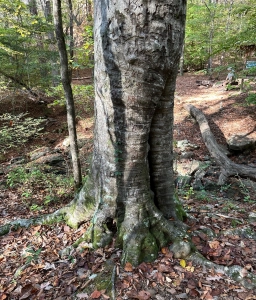
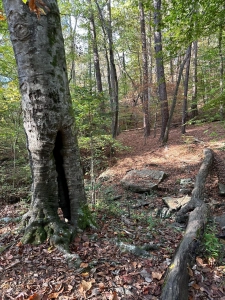
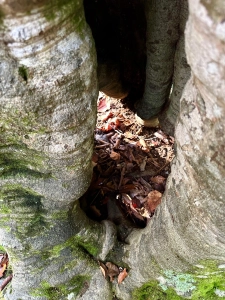
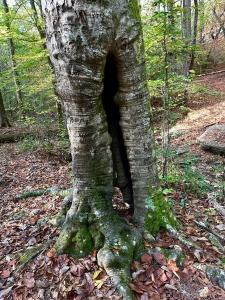
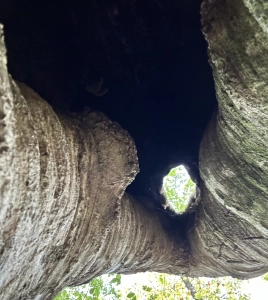
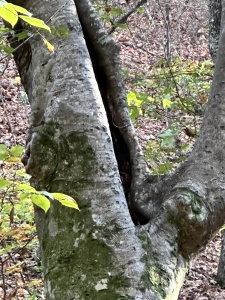
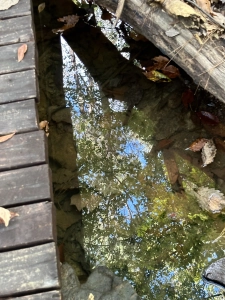
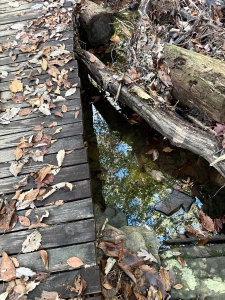
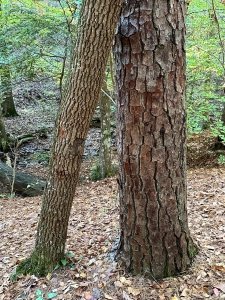
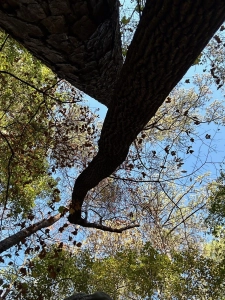
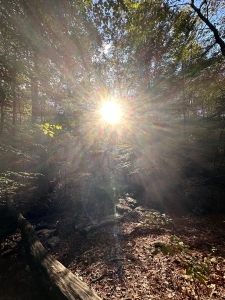
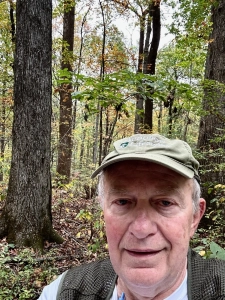
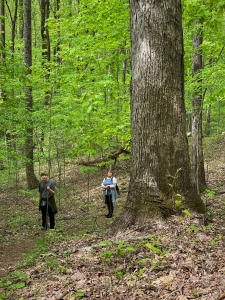
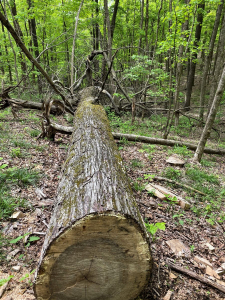
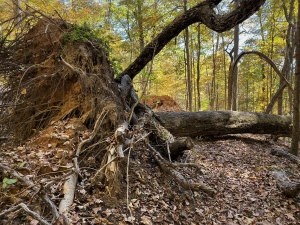
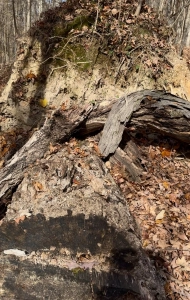
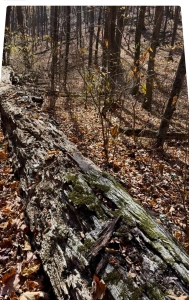
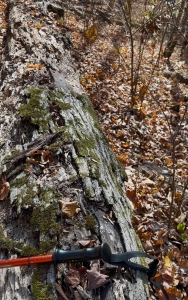
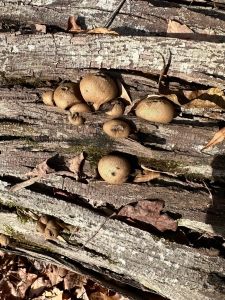
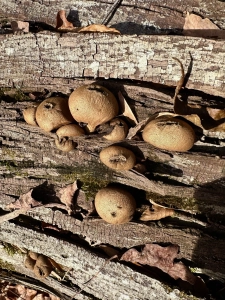
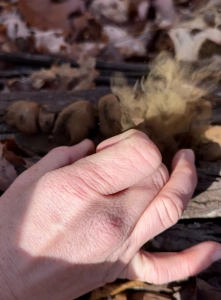
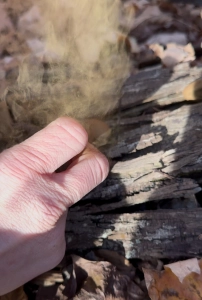
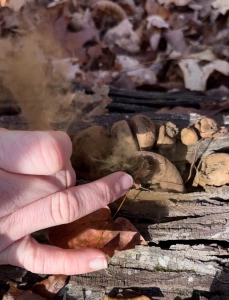
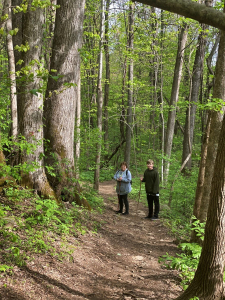
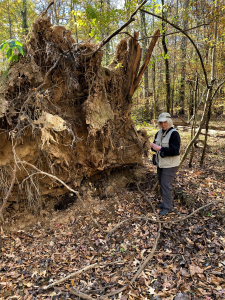
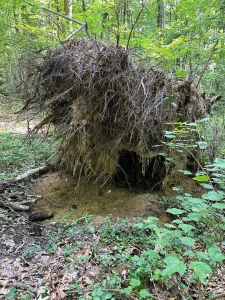
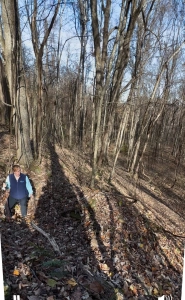
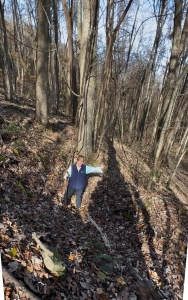
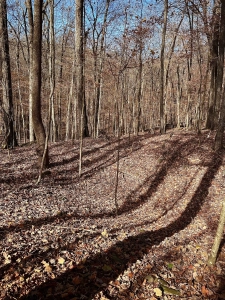
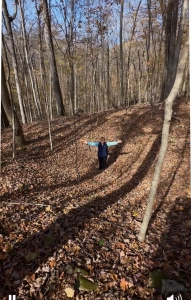 Amber walked into this sinkhole (dimple) that is 25-feet across and 10 feet deep.
Amber walked into this sinkhole (dimple) that is 25-feet across and 10 feet deep.